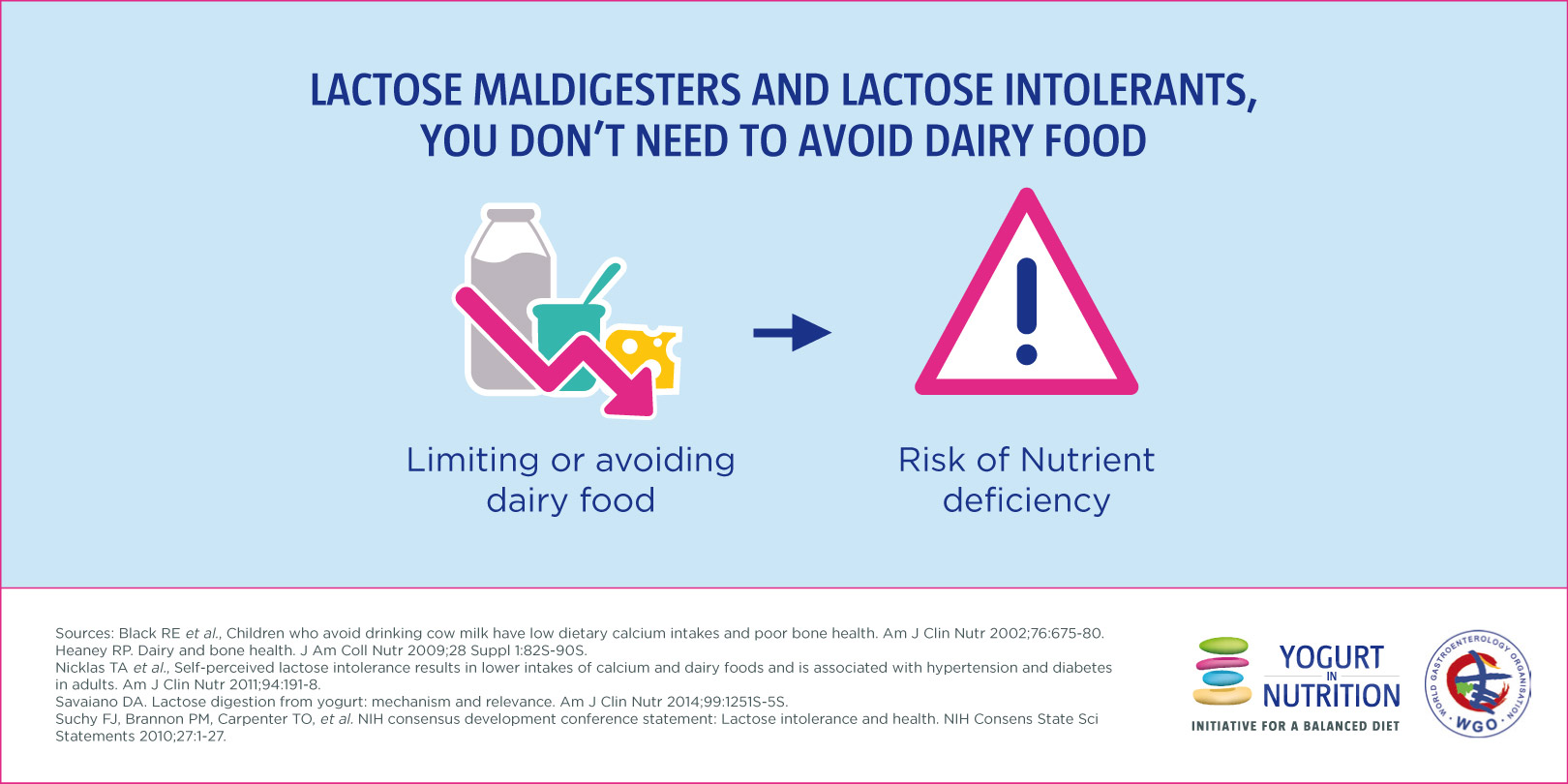For lactose intolerants and maldigesters, avoidance of milk and dairy products could have health consequences. Many medical organizations recommend that lactose maldigesters and intolerants should not avoid dairy foods in order to prevent nutrients shortcomings. Lactose maldigesters and intolerants should adapt their diet.
Small amounts of lactose can still be consumed without triggering any symptoms. The consumption of yogurt, which contains live bacteria that help digesting the lactose it contains, and of cheeses that contain low or no lactose is possible and even encouraged (cheddar, provolone, mozzarella, etc.).
Lactose-free food or avoidance of dairy food is only needed for the rare infants with congenital lactase deficiency. Total lactase deficiency is rare (less than 50 patients in the world, mainly in Finland). It is a genetic disorder called congenital lactase deficiency.
Lactase supplemented food are also not necessary for lactose maldigesters and lactose intolerants.
Sources:
- Black et al. Am J Clin Nutr 2002;76:675-80.
- Efsa Panel on Dietetic Products N, Allergies. Scientific Opinion on the substantiation of health claims related to calcium and maintenance of normal bone and teeth (ID 2731, 3155, 4311, 4312, 4703), maintenance of normal hair and nails (ID 399, 3155), maintenance of normal blood LDL-cholesterol concentrations (ID 349, 1893), maintenance of normal blood HDL-cholesterol concentrations (ID 349, 1893), reduction in the severity of symptoms related to the premenstrual syndrome (ID 348, 1892), “cell membrane permeability” (ID 363), reduction of tiredness and fatigue (ID 232), contribution to normal psychological functions (ID 233), contribution to the maintenance or achievement of a normal body weight (ID 228, 229) and regulation of normal cell division and differentiation (ID 237) pursuant to Article 13(1) of Regulation (EC) No 1924/2006. EFSA Journal 2010;8:n/a-n/a.
- Heaney et al. J Am Coll Nutr 2000;19:83S-99S.
- Heaney et la. J Am Coll Nutr 2009;28 Suppl 1:82S-90S.
- Lukito et al. Asia Pac J Clin Nutr 2015;24 Suppl 1:S1-8.
- Nicklas et al. Am J Clin Nutr 2011;94:191-8.
- Suchy et al. NIH Consens State Sci Statements 2010;27:1-27.
- Vandenplas et al. Asia Pac J Clin Nutr 2015;24 Suppl 1:S9-13.





